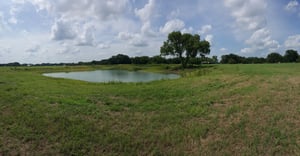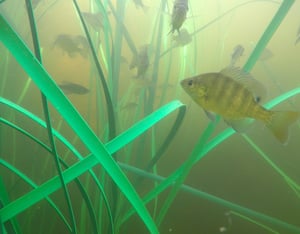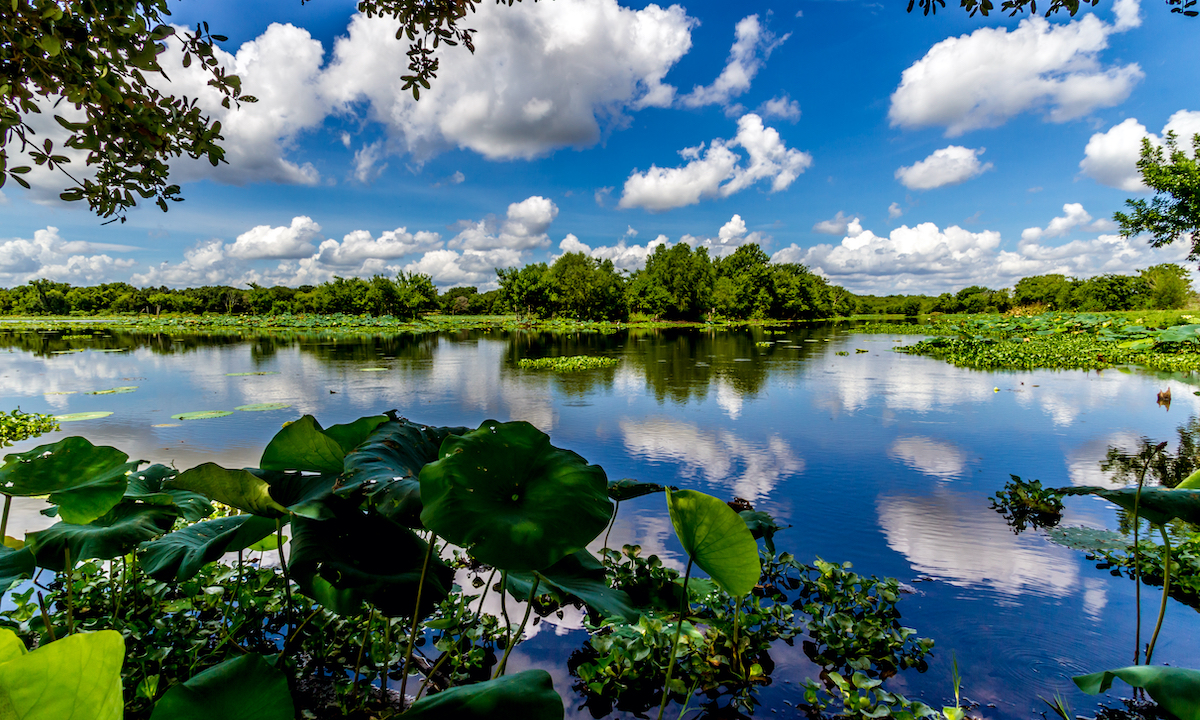A pond or lake's rate of succession is dramatically impacted by the soils and ecosystem of the surrounding area, the climate, and the depth profile. But, good management practices can help slow the process.
What is Pond Succession?
Succession is a natural part of any lake, reservoir, or pond.
With natural lakes, much of their succession began long before any data recordings or scientific understanding of what was actually happening. This is because natural lakes are formed by landslides, glacial craters, and even tectonic plate movements. None of which, as you can guess, have occurred recently.
After these basins filled with water, their succession process began and didn't wait around for us to get there and take notice. However, with newly built reservoirs, lakes, and ponds, like those we have in Texas, we can witness this same form of succession firsthand.
Just as all bodies of water are unique in their own way, so is the way they progress through their "lifecycle."
Some progress through their lives quicker than others, and some have issues that don't occur in the next watershed over. The variance in the rate of change and aspect of succession has a lot to do with the soils and ecosystem of the surrounding area, the prevailing climate, and the depth profile.
At any rate, like everything in life, there is a beginning, a middle, and an end.
The Phases of Succession
All bodies of water begin as an open basin that collects and fills with water. Once filled, "primary producers" are the first inhabitants. These Algae and Phytoplankton utilize sunlight and inorganic nutrients to grow and produce organic biomass.
They are then either consumed by first-level consumers, Zooplankton such as Rotifers, Daphnia, and small aquatic insects, or die and fall to the bottom of the pond where the organic material richens the pond's soil substrate.
There are then varying levels of consumers that prey on the lower levels.
The Middle and End Phases of a Pond’s Life
While all of this is occurring over time, the water body is slowly filling in with substrate; soils, organic material, rocks or boulders, that are being brought in from the surrounding watershed along with the plant and animal material from natural life cycles within the water.
This process continues until the basin is eventually filled. This is the end of the water body where, depending on the climate, it will either turn into a bog or a terrestrial environment based on the water it can retain.
Now that the history lesson is over, we can get into the management of this natural process.
How to Manage Pond or Lake Succession
The first 5-8 years after a fishery has been filled with water is the most productive period of any fishery without any management input. This is because the terrestrial landscape that has been inundated is releasing nutrients into the water, increasing your primary producers' productivity, which in turn provides more resources for your pond through tertiary (final) consumers.
The fishery is empty of any siltation from the surrounding watershed, and aquatic vegetation hasn't taken over yet. However, without any human interaction, the process described above will naturally progress until the fishery is no more.
There are, however, ways to prolong and even correct this process.
Steps for Managing Succession:
1: Location and Placement of Where You Build Your Pond

One of the easiest ways to manage your pond's rate of succession is by putting it in the right spot in the first place.
Selecting a basin in a watershed with limited agricultural usage areas will help reduce the amount of sediment washed into your pond from run-off, decreasing the pond's depth profile year after year, and limit the number of inorganic nutrient inputs that can lead to nuisance vegetation growths.
Choosing an area with limited exposed soils or loose soil material will limit the amount of sediment deposited into your fishery. Areas with rocky surroundings will have fewer loose sediments to wash into your fishery.
2: Create a Sediment Trap
If you cannot choose the ideal location to reduce the effects of pond succession, then create a wetland or "sediment trap" upstream of your pond to collect the unwanted silt from run-off.
Sediment traps are easily constructed areas designed to slow the run-off flow before reaching the main body of water.
By slowing down the flow of water, the sediment falls out of suspension and is deposited in a controlled location - ideally of your making. Eventually, this wetland area will fill up with the collected substrate and need to be dredged and re-engineered, or the silt will begin to collect within the main body of water despite your efforts.
3: Prevent Detritus Buildup

Organic debris input is another less recognized but insidious way the rate of succession is often accelerated and is a leading cause of fisheries filling in. Whether from trees and bushes left in the basin when it was created or built, from runoff events that wash these structures in, natural aquatic vegetation, or habitat improvement efforts with natural structures, organic debris builds up.
As these organic material types degrade in the body of water, they fall to the bottom and become detritus. This is the "muck" at the bottom of the pond that smells like rotten eggs when it is disturbed. While this is one of the slower ways a basin fills in, it is still a contributor to pond succession.
Preventing this form of siltation is where fisheries management can really pay off. Fish need structure to grow properly and perform their natural tasks. However, the continuous addition of organic material or uncontrolled aquatic vegetation growth begins to shorten the lifespan of your fishery.
Artificial habitat (pictured above right) can help limit this type of succession, especially in smaller lakes and ponds.
4: Dredging as a Last-Ditch Effort

Finally, the only way to reverse the effects of pond succession is through dredging, but dredging is very labor-intensive and expensive. Professionals will either drain the pond and go in with a bulldozer to remove the sediment that has collected over the years or utilize barges set up with excavator-type scoops or pumps to remove the sediment without draining the fishery.
The latter option is designed more for large lakes where draining the entire water body isn't feasible, and it can be difficult to find companies to perform this service in your area. While preventative measures are more cost-effective, sometimes this is the only way to recover your fishery.
All Lakes and Ponds Need a Succession Management Plan
Whether it's a natural lake, a man-made reservoir, or a pond, pond succession will occur no matter the size or geographic location. It may take several decades, or it may take a few hundred years, but without proper planning and preventative measures, eventually, the basin will fill in, and what once was a thriving fishery, without proper planning and preventative measures, will be a muddy bog.
Slow the Rate of Pond and Lake Succession with Fisheries Management
If you have any questions on slowing the effects of successions on your pond or lake, feel free to contact the fisheries biologists at Pond King anytime or give our team a call and see how we can help you!
See y'all down at the pond!




